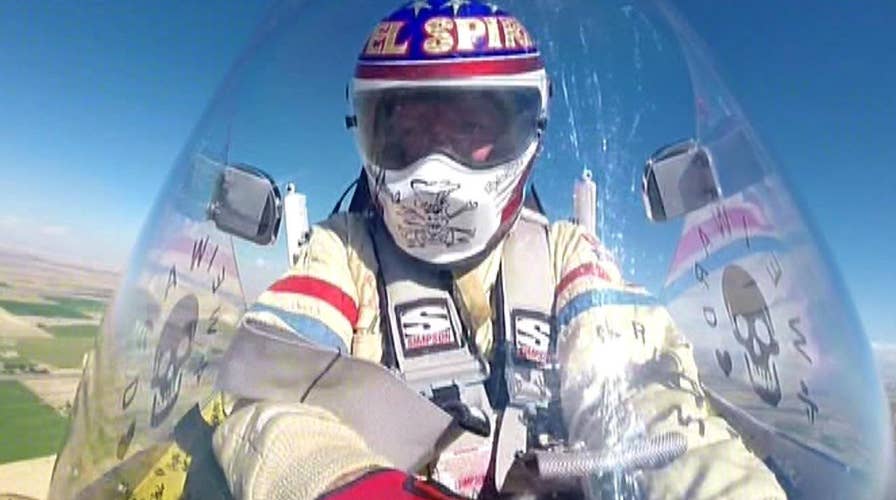TWIN FALLS, Idaho – Professional stuntman Eddie Braun successfully jumped over the Snake River Canyon Friday afternoon in an ode to his boyhood idol, Evel Knievel.
Braun soared over the southern Idaho canyon in a custom-built rocket dubbed "Evel Spirit."
It launched off a steep ramp on the edge of the canyon rim just before 4 p.m. as hundreds of onlookers watched.
The rocket reached an estimated 400 mph before its parachute deployed, allowing Braun and the ship to land safely in fields on the other side of the 1,400 foot-wide canyon.
"I feel like the no name third string quarterback of a junior varsity team that just won the Super Bowl. My team got me there. I ran it into the end zone. We scored and won," Braun said in a statement after the jump.
Scott Truax, the designer of the rocket, told the Idaho Statesman that after Braun got the OK to launch he didn't hesitate.
"He was gone in a cloud of steam and I couldn't see anything until just before he pulled his chutes," Traux said.
Braun has said the rocket was identical to the model Knievel used for his failed canyon attempt on Sept. 8, 1974. Knievel landed at the bottom of the canyon when his parachute prematurely deployed partway across the canyon, but walked away with only minor injuries. The spot where Knievel jumped was 1,600 feet wide.
Braun hoped his effort would prove that Knievel could have made it across the canyon if his parachute had deployed at the correct time.
Before the jump, the 54-year-old Braun said he was optimistic he would make it across the canyon.
"I wouldn't be doing this if I thought it couldn't be done," he said.
Still, he had prepared for the worst in the days before the stunt, asking his young son to one day walk his sisters down the aisle at their wedding if Braun died in his attempt.
Months of testing was performed on the rocket designed by Scott Truax, whose father constructed the original "X2 Skycycle" for Knievel.
Truax followed his father's blueprints down to the last bolt and deviated only by updating the parachute system.
Braun had trouble finding corporate sponsors for the stunt, and said he spent about $1.5 million of his own money on the jump.
He looked at the stunt as a way to pay homage to Knievel, who inspired him to become a stuntman.
"I like to say I'm not doing something that Evel Knievel couldn't do," he told the Statesman before making the jump. "I'm simply finishing out his dream. How many people get to finish the dream of their hero?"
Not all in the southern Idaho town of Twin Falls have such fond memories of Knievel. Many residents remember Knievel's promise of a weeklong festival complete with celebrities and a golf tournament.
Knievel's attempt drew plenty of spectators, and the resultant partying, fighting and mischief upset locals. The daredevil was later accused of leaving town without paying debts to area businesses.
But the mystique of Knievel's failed stunt has lived on, with would-be daredevils showing up every decade or so to propose similar jumps. Knievel's son Robbie visited Twin Falls in the 1990s and in 2010 to float the idea of a possible jump, though it never came to fruition.
Braun appears to have been the first to actually try the stunt since Knievel's attempt.






















